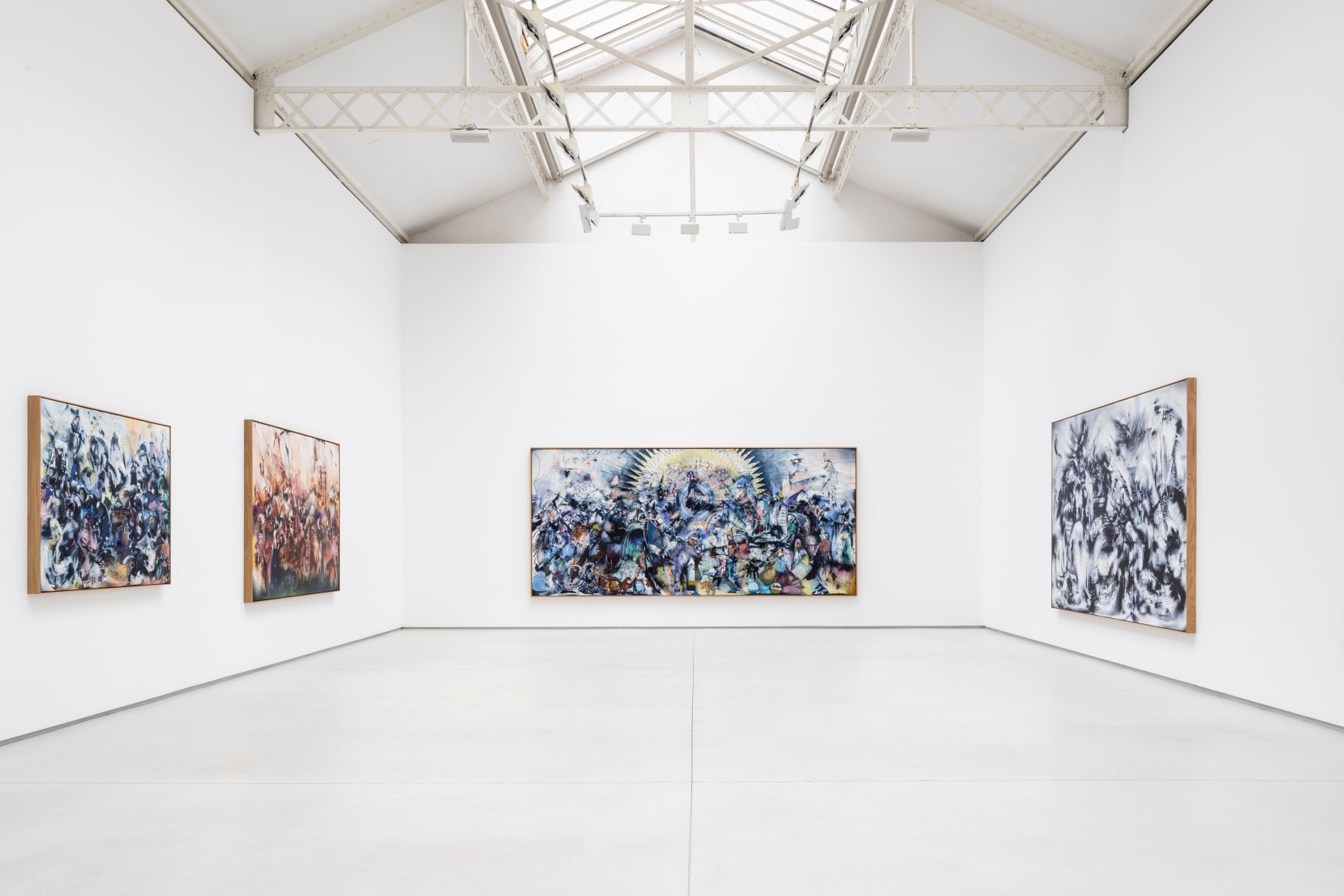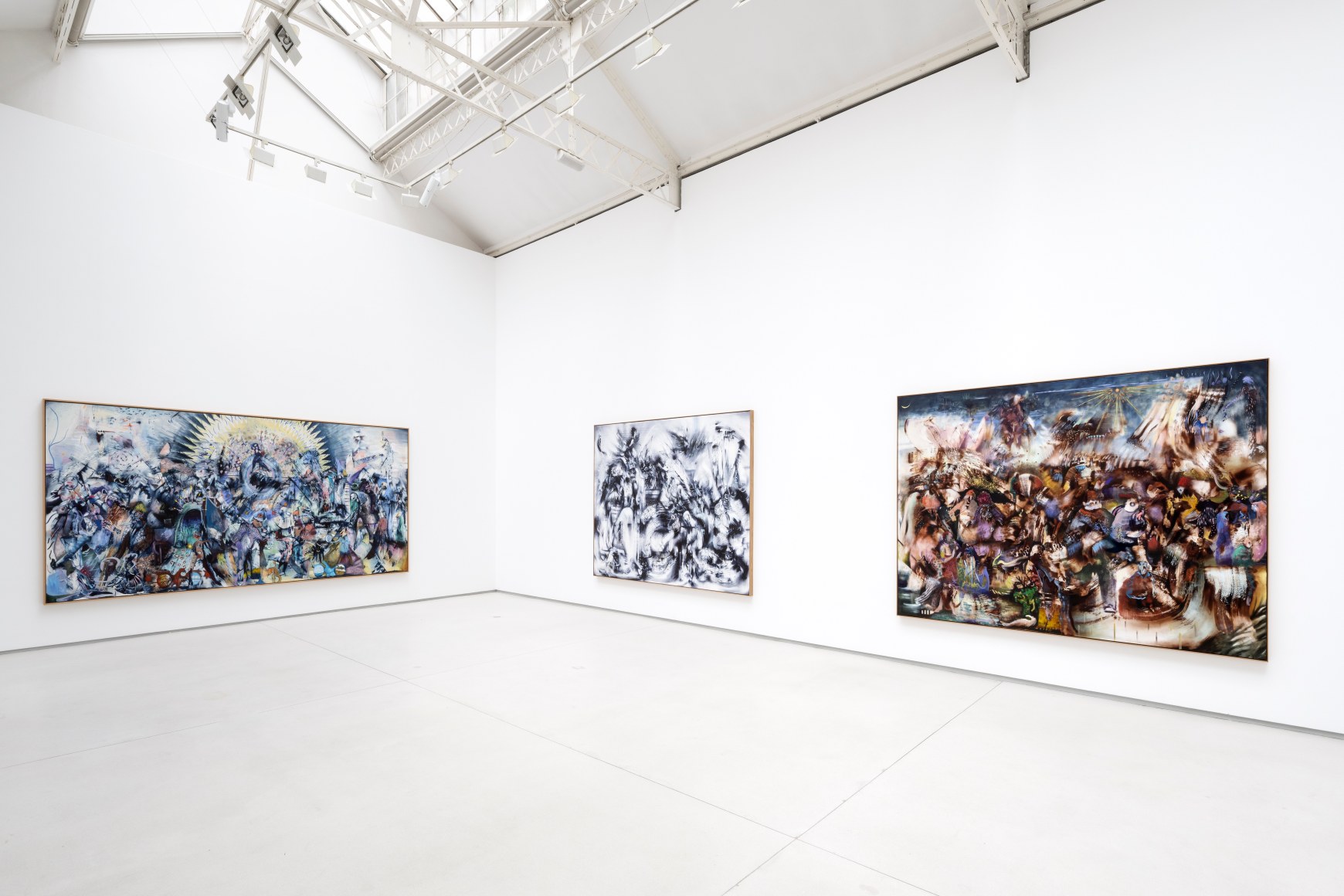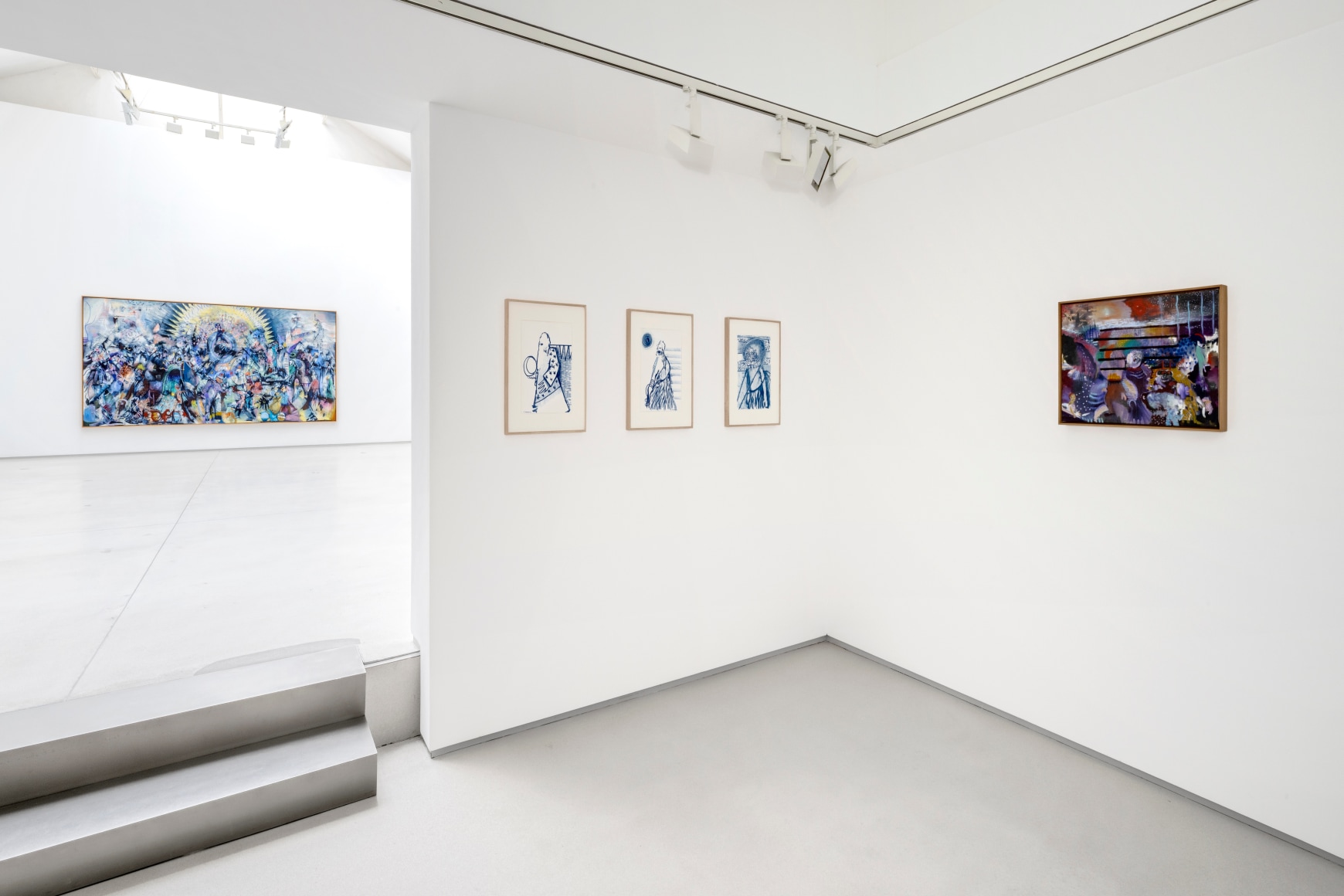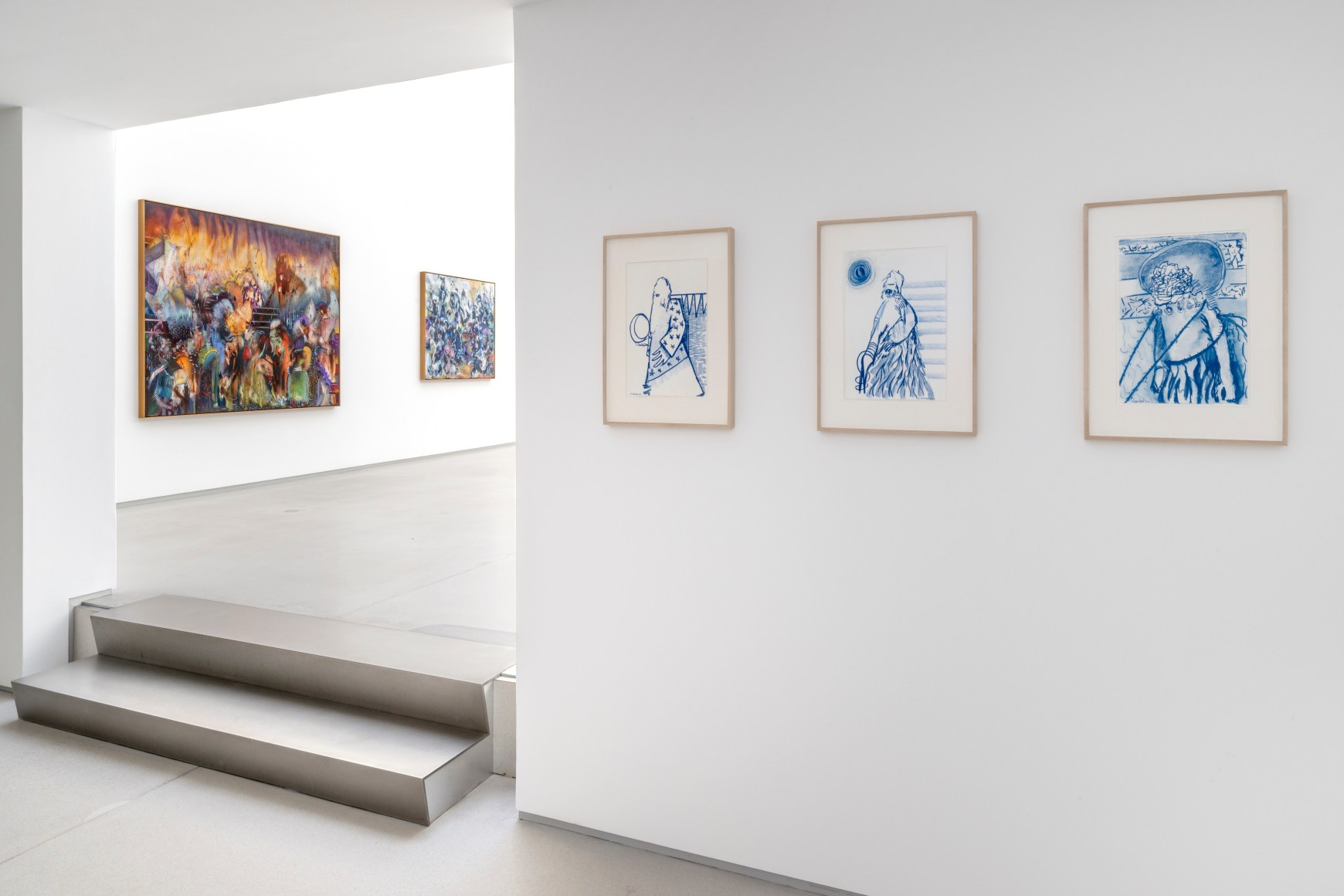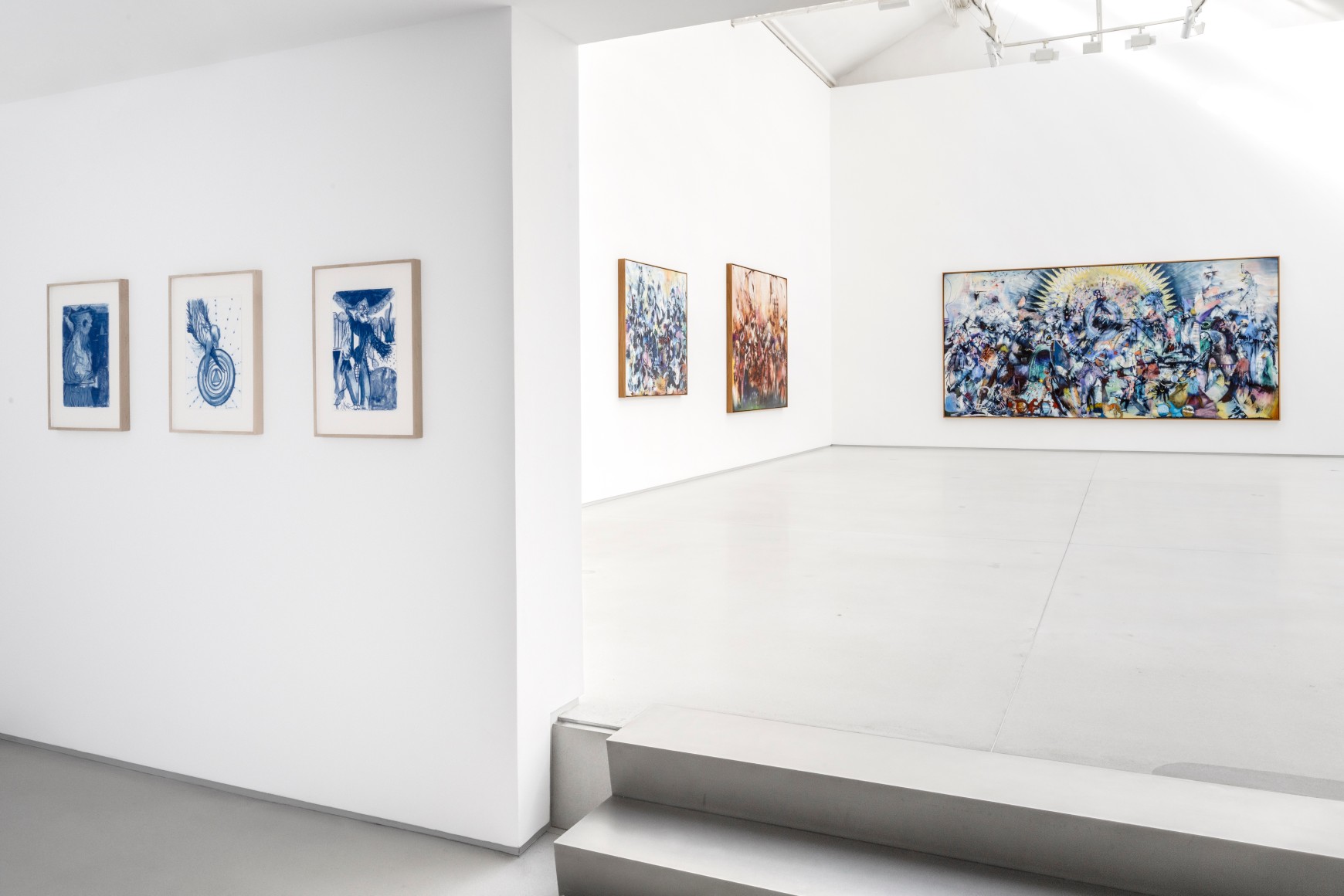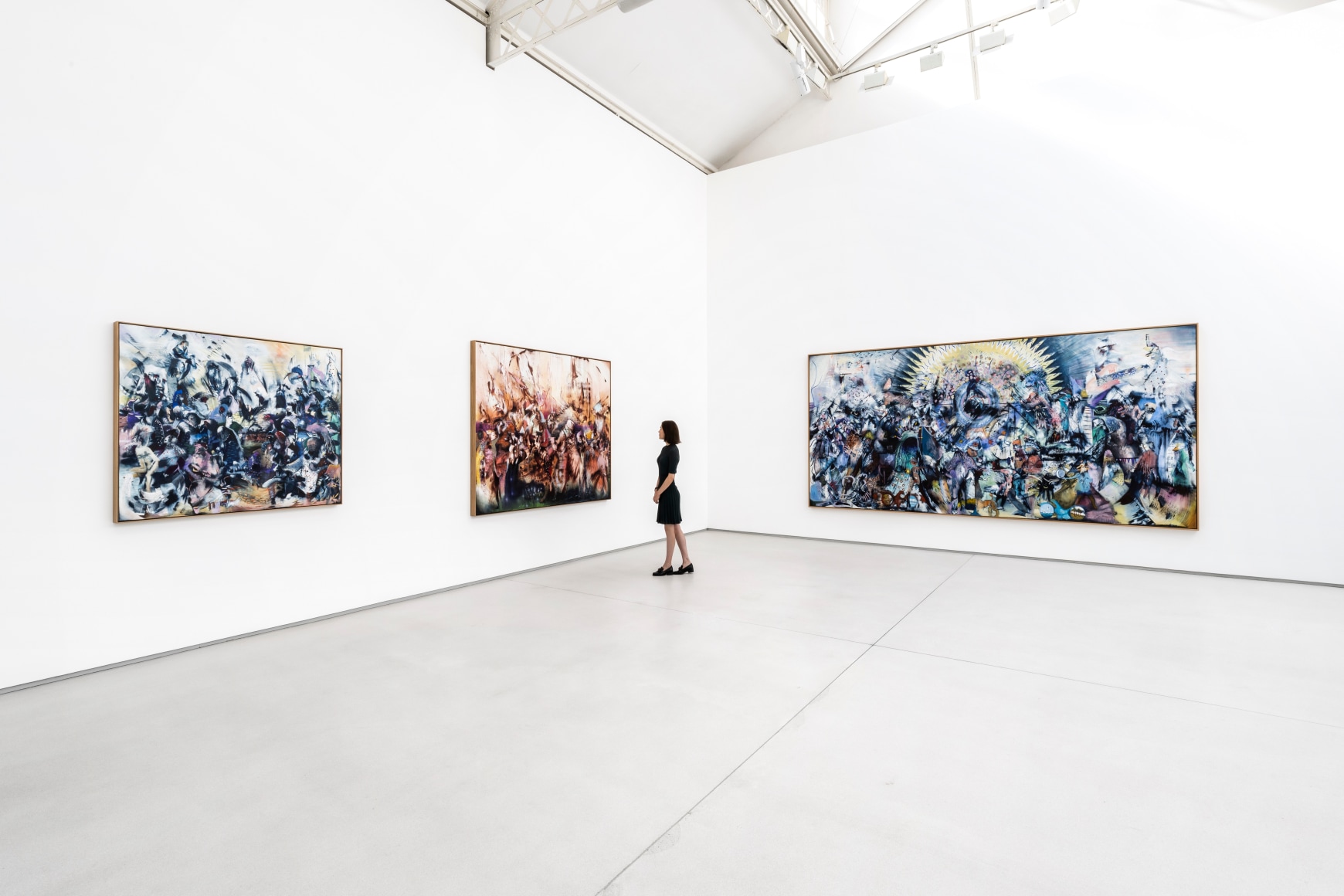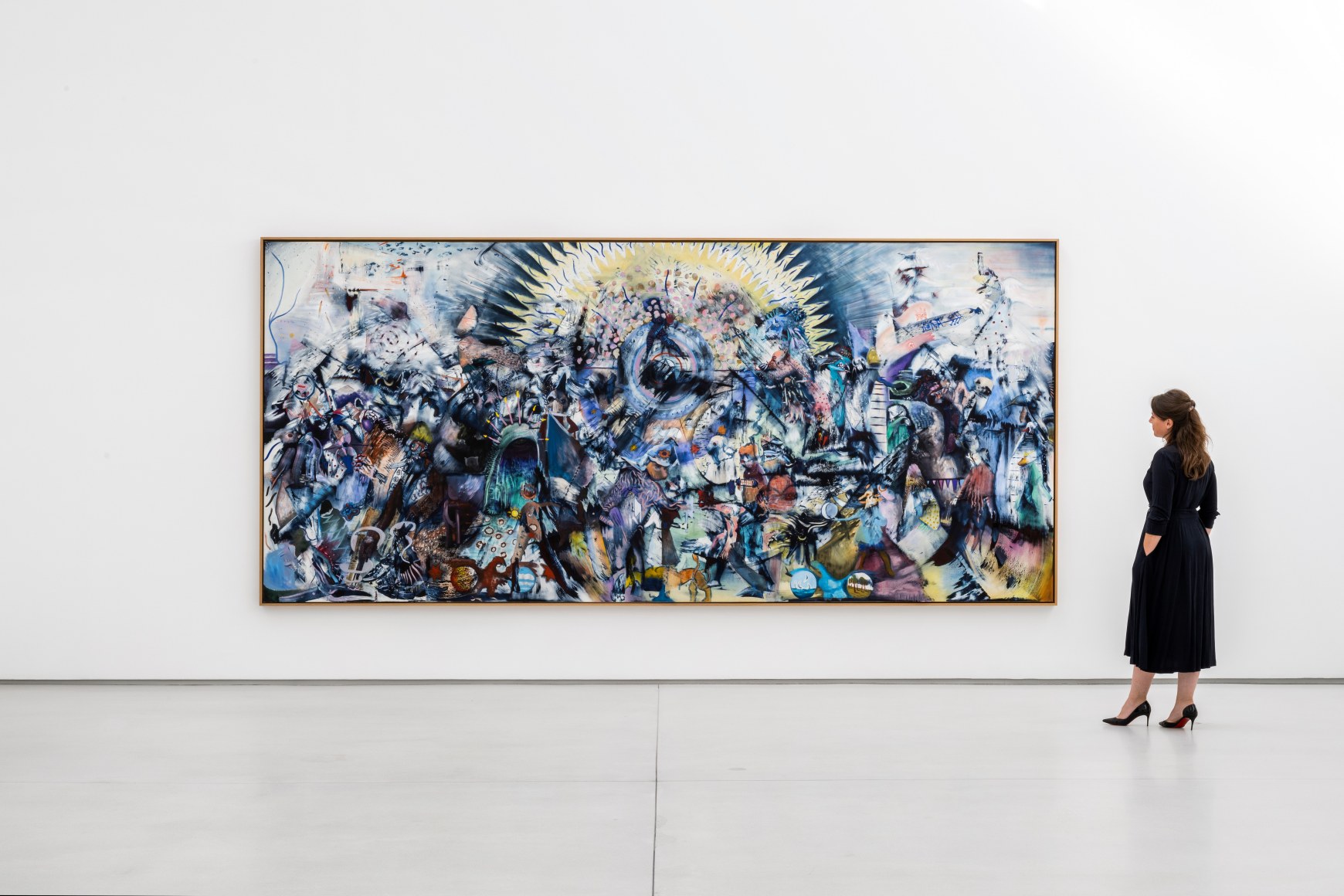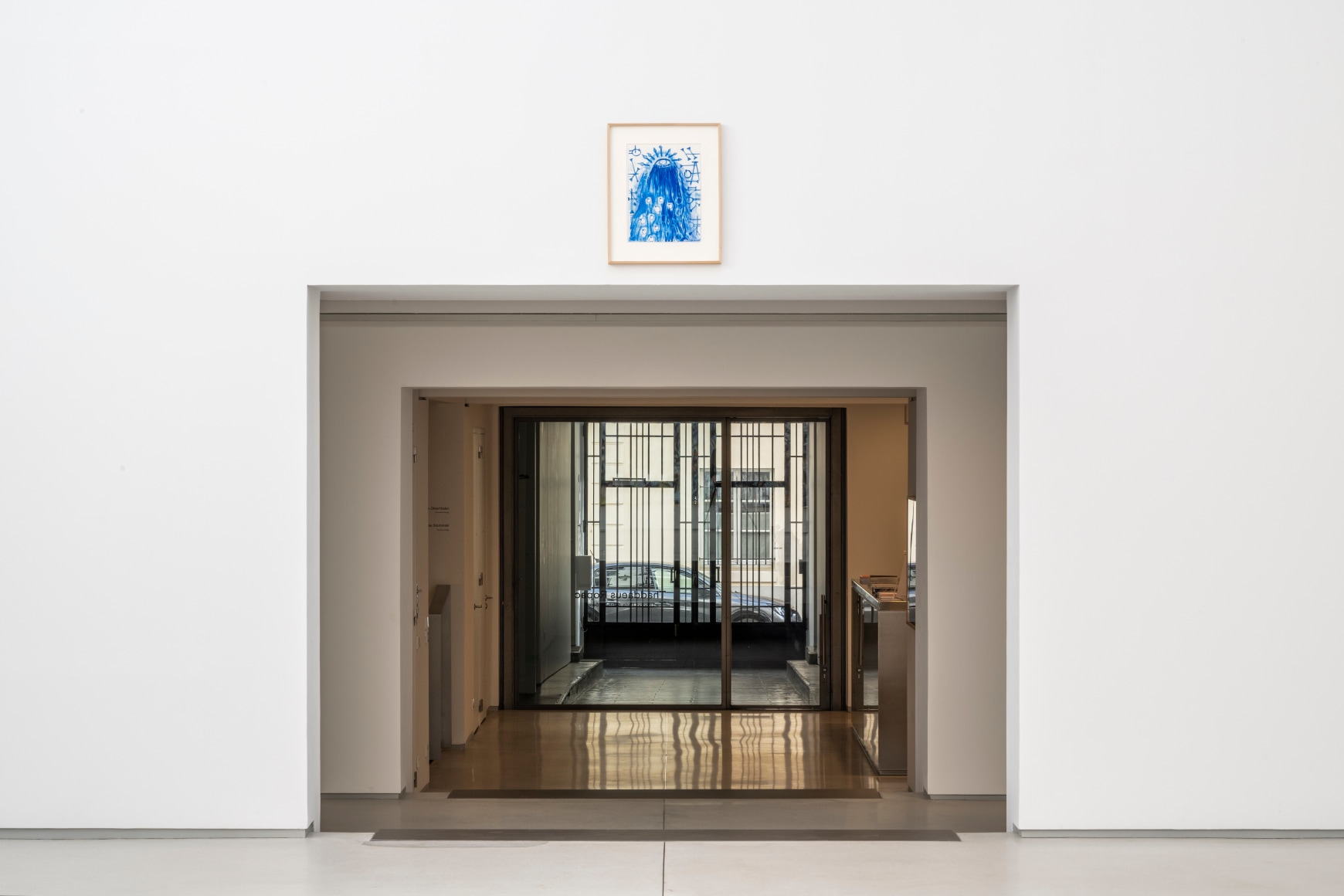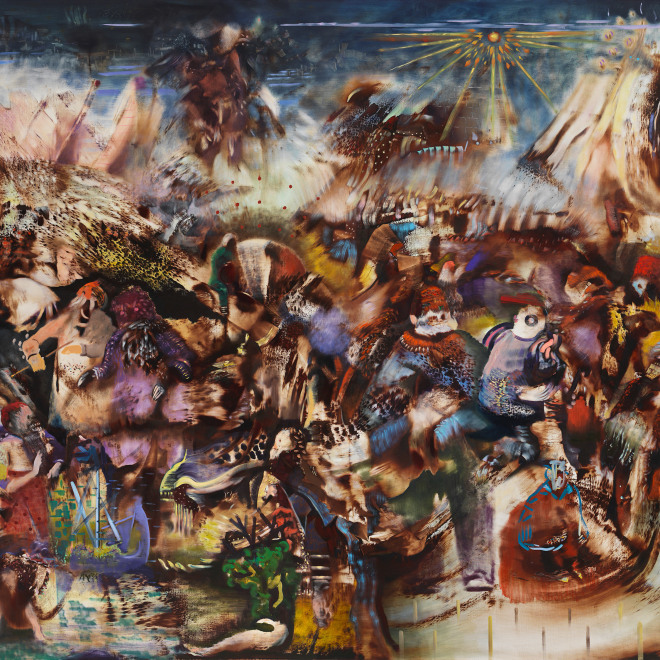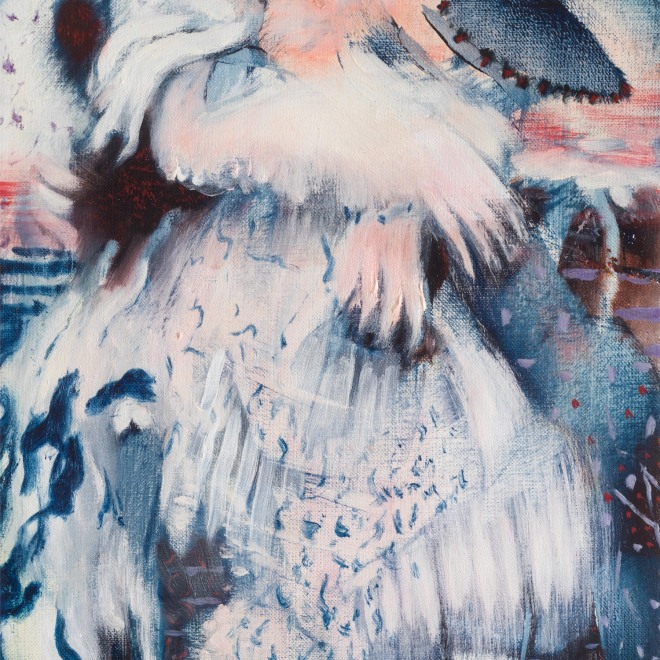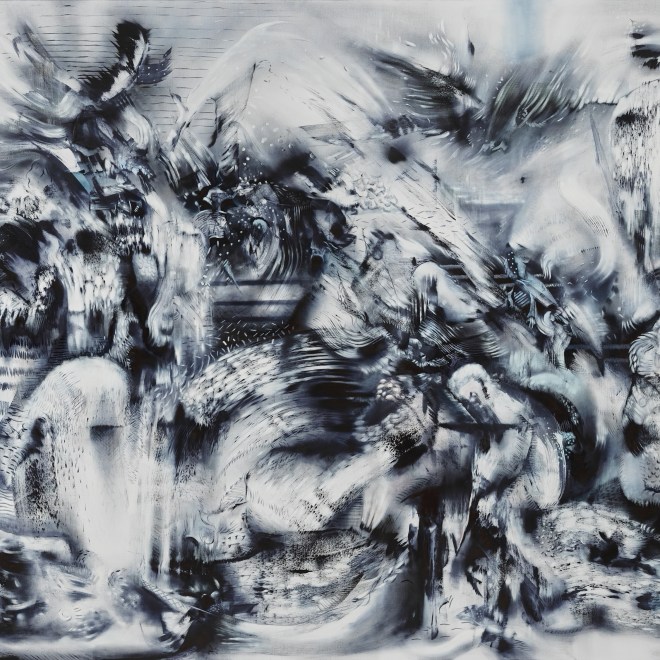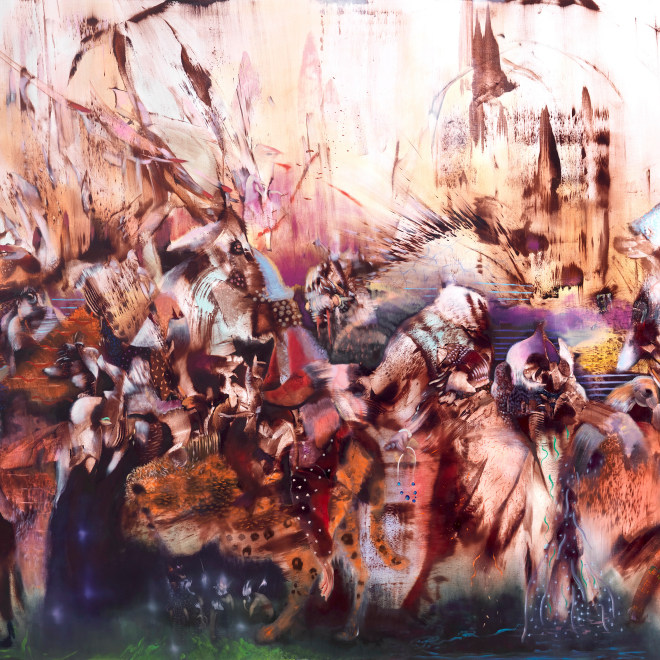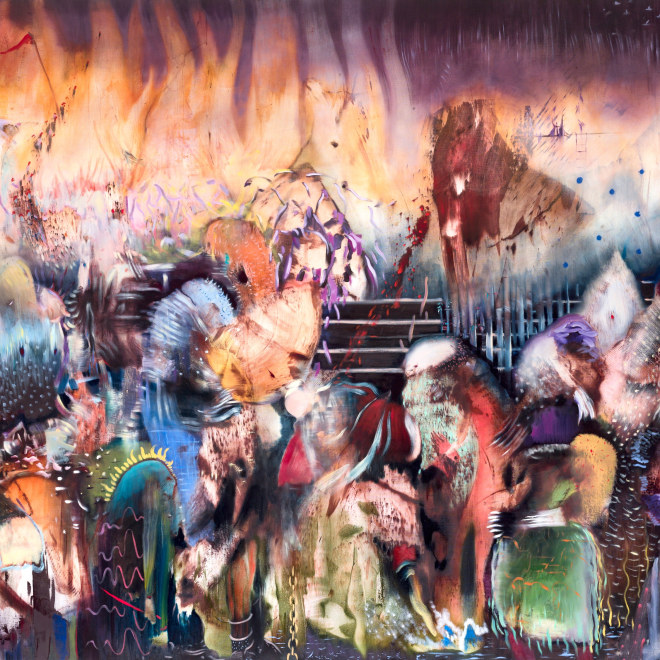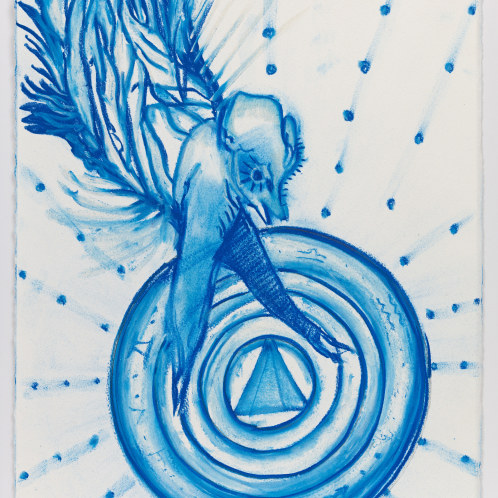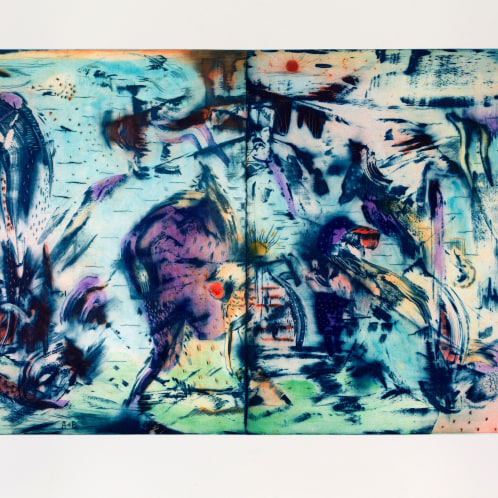
Click for > Online Exhibition
Return to Mother is an exhibition of new works by Tehran-born, US-based painter Ali Banisadr. Blending abstract gestures and delicate figurative details, his paintings provide a kaleidoscopic vision of human history, inviting viewers to reflect on contemporary issues through the lens of the past, and to absorb the epistemic power of images.
"Freedom is the ability to move through time, to enter different head spaces, different art histories, different cultures, to dissolve boundaries. There is no blueprint – the painting goes where it wants". — Ali Banisadr
Banisadr describes his paintings as portals onto different worlds in which reality, history and mythology coalesce as though through an alchemical process. Drawing on a wealth of literary and art-historical references, as well as current events and his own lived experience, he creates moving tableaux populated by colourful apparitions that might be found in Dante’s Inferno, or on a distant planet.
"Visual imagery is a way to organise thoughts and to connect thoughts which are fragments gathered from many different sources. They are woven together like a Persian carpet [...] in order to be activated." — Ali Banisadr
Return to Mother is the largest single-panel painting ever realised by Banisadr. Its title is a literal translation of the Sumerian word 𒂼𒄄, pronounced ‘ama-gi’, which is thought to be the earliest written reference to the concept of freedom. ‘Freedom is the thing I am after when I am painting,’ explains the artist, ‘there is no master plan, there are no borders. I don’t have to answer to anyone.’ Unusually for Banisadr, the composition unfolds around a central, circular motif, which the artist describes as the ‘wheel of life’, being activated by a serpentine creature he calls the ‘spinner of stories’. Around it, allegories and elemental symbols are mingled with references to Egyptian and Mesopotamian artefacts and modern technology.
Hybrid creatures reminiscent of Hieronymus Bosch’s famous bestiaries can be found throughout Banisadr’s paintings. Here, what the artist describes as a philosopher-ape is holding a compass. The drawings are the first of their kind for Banisadr. Rather than preparatory sketches, they were made in pastel after the original paintings, highlighting and solidifying the characters that emerged from his canvases.
The one-eyed figure crowned with burning candles might variously be identified as Mithra, St Lucia, Lady Liberty, a seer or a sleepwalker. Her dress is covered with ouroboros – the serpent biting its own tail – an ancient alchemical symbol for eternity, often accompanied by the maxim: ‘one is all, and by it all, and for it all, and if it does not contain all, then all is nothing.'
In The Great Replacement (2022), Banisadr references and challenging the racist conspiracy theory that continues to fuel anxieties among Western societies since its formulation in 2011. Weaving together the past and present, he invites us to look back through history and question our assumptions to see the present and the future in a new light.
A naked man, painted in shades of yellow that contrast with the surrounding crowd, seems to be being pushed out of the frame, while above him, a rider bears down on the scene, armed with a shadowy cross. ‘Who is replacing whom?’ asks Banisadr in this painting, ‘what does history say about Napoleon, the Inquisition, wars waged on the back of religion?’
"I have long been fascinated with Dante and how he was able to engage contemporary theology, classical philosophy, sociological matters and political concerns. To mine the texts of the past, to explore some of the same themes and questions that the great minds had wrestled with throughout the ages". — Ali Banisadr
Banisadr pays homage to medieval poet Dante Alighieri in this painting. Dante referred to his writings as ‘beautiful lies’, describing how truth unfolds out of allegory in his poems. ‘I believe that epic poems hold the essence of all the stories we have been telling ourselves,’ explains Banisadr, ‘which is very important in my own work.’
"Once the air in the painting is able to flow through its veins, then it has found a life of its own – it can function in the world." — Ali Banisadr
The title of this large canvas references novelist Franz Kafka’s mantra that we should read books that ‘affect us like a disaster, that grieve us deeply, like the death of someone we loved more than ourselves.’ Banisadr sees painting in a similar light, wanting his own works to provoke viewers into thinking differently. ‘The ice melts and we find the thing that has been frozen for ages,’ he says. ‘This new discovery changes history and the ever-changing past continues forward.’
This painting (Pyramids of the sun and the moon) is named after the ancient pyramids found in the archeological site of Teotihuacan, Mexico. Built in 200 A.D. and 250 A.D. respectively, the Pyramid of the Sun and the Moon were erected above a much older complex of caves, which is said to have been the ‘womb’, or the birthplace of humanity, in the Central Mexican tradition. Among the swirling figures, a painter can be made out, inscribing, as Banisadr describes it, ‘the name of the creator on a stone’. He is accompanied by a shaman, who acts as his guide through the other-wordly scene, just as Virgil did for Dante in the Divine Comedy. Elsewhere, a corpse can be seen turning into vegetation: ‘is this the underworld?’ asks the artist.
This small painting (Mother) highlights one of the enigmatic characters that populate Banisadr’s large-scale compositions. The figure of the Mother contains a multitude of references and allusions, ranging from the personal to the ancient Queen of the Night relief found in the collections of Babylonian art in London’s British Museum.
I see my paintings not as landscapes, but more as a theatrical stage. You have these different flat backgrounds of stages that occupy the paintings and then you have these costumed figures, acting out my play. – Ali Banisadr
Born in Tehran in 1976, Banisadr moved to California with his family when he was a child. While living in San Francisco, he studied psychology and became involved with graffiti art. He has lived and worked in New York since 2000, where he studies at the School of Visual Arts and the New York Academy of Art. His work has been shown in numerous museums, including Stedelijk Museum voor Actuele Kunst, Ghent (2010); The Metropolitan Museum of Art, New York (2012); Museum of Contemporary Art, Los Angeles (2013); Lehmbruck Museum, Duisburg, Germany (2013); The Museum of Fine Arts, Houston (2017); and Victoria & Albert Museum, London (2021). He was the subject of a two-person show with Andrew Sendor at the Museum of Contemporary Art, Jacksonville, USA, as well as Bosch and Banisadr: We Work in Shadows at Gemäldegalerie, Academy of Fine Arts, Vienna (both 2019). He was included in Love Me/Love Me Not: Contemporary Art from Azerbaijan and Its Neighbours at the 55th Venice Biennale in 2013. Recent solo exhibitions were held at the Het Noordbrabants Museum, ‘s-Hertogenbosch, Netherlands (2019); Benaki Museum, Athens (2020); Wadsworth Atheneum Museum of Art, Hartford, USA (2020); and Stefano Bardini Museum & Palazzo Vecchio Museum, Florence (2021).

